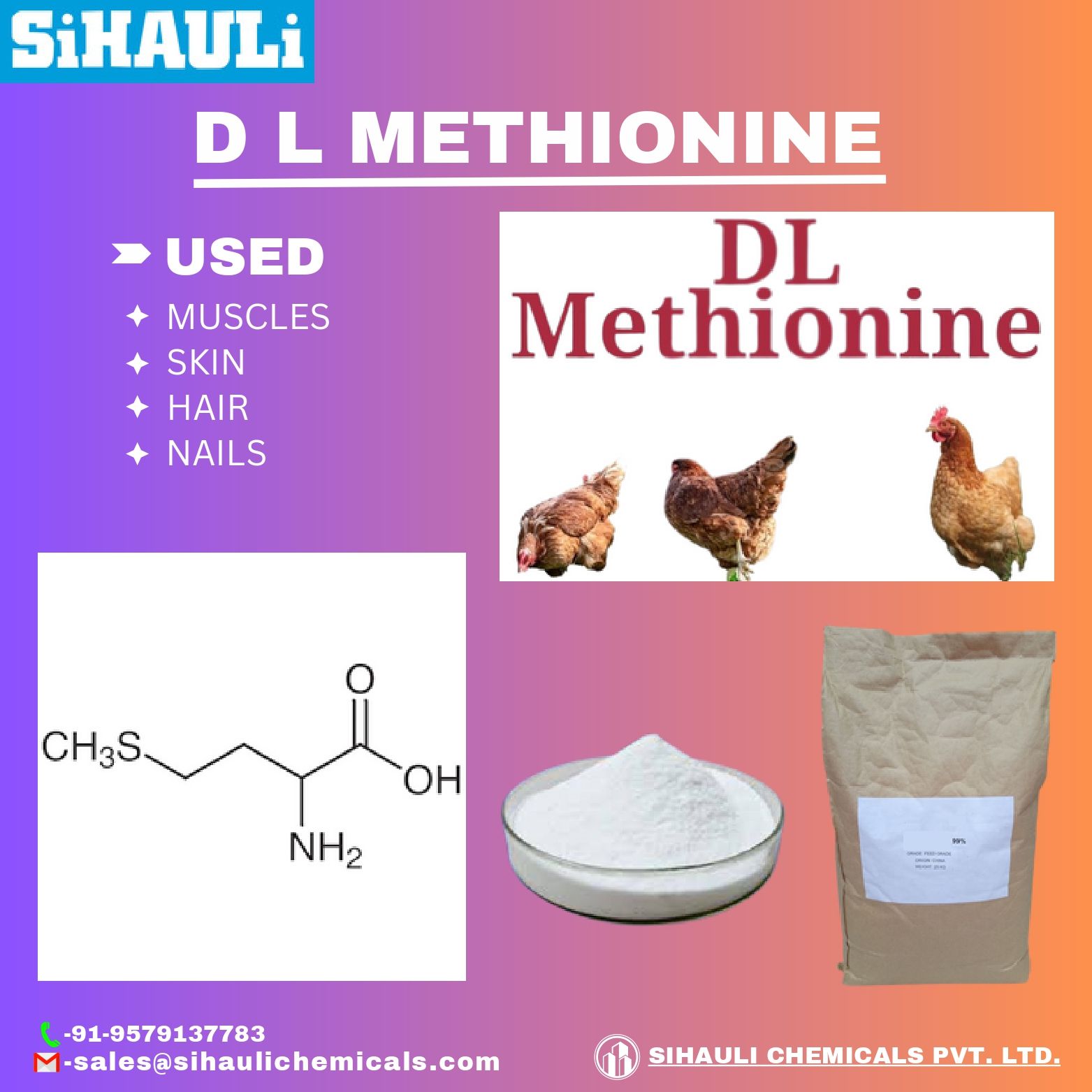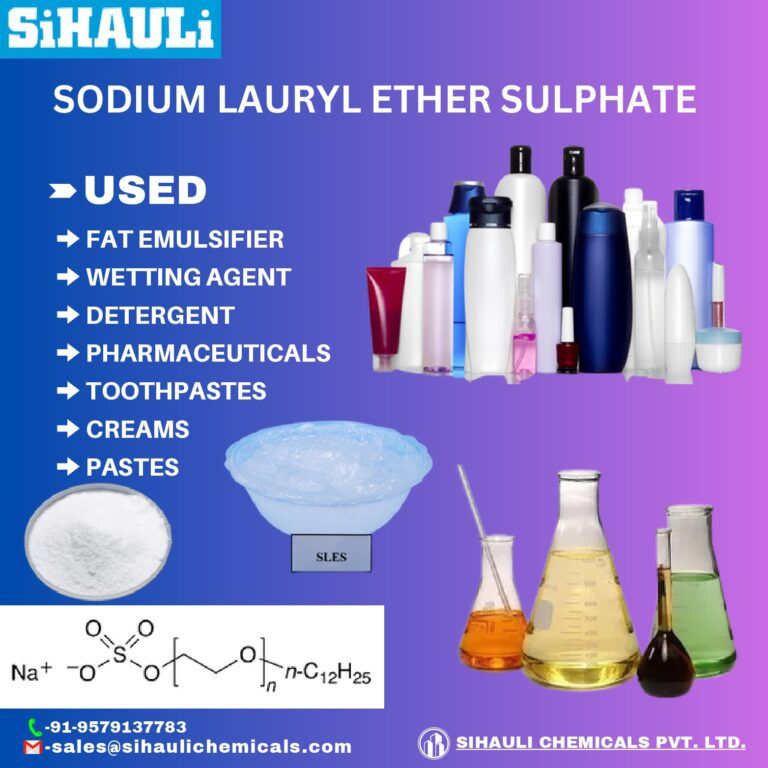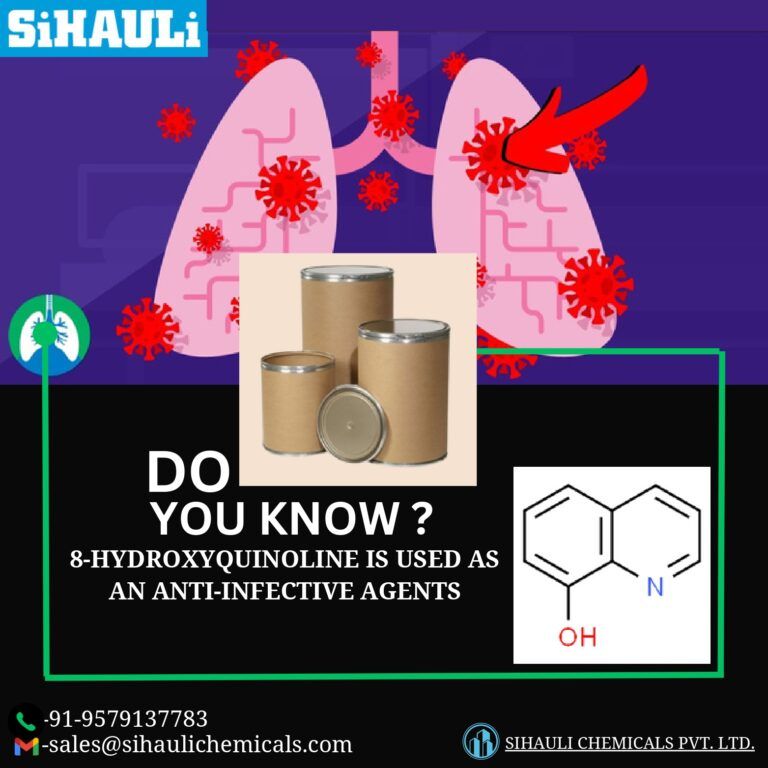DL-Methionine is an essential amino acid that is involved in the synthesis of proteins and other important compounds in the body. By supporting protein synthesis, DL-Methionine helps to build and repair tissues, including muscles, skin, hair, and nails
General information
DL-methionine is used to enrich and balance the diets of farm animals, including poultry, and to produce complete feed, premixes, and feed additives.
DL-methionine with the digestibility of about 100 % consists of a mixture of two, D and L, stereoisomers. Animals absorb L-amino acid forms only. And if, for example, D-lysine or D-threonine cannot be used by the organism, D-methionine is metabolized into the L-form. In other words, DL-methionine contains about 50 % of absorbable L-form, and the remaining 50 % become available only after biotransformation.
Appearance
White crystalline powder with specific odor.
Biological effects
Methionine is an essential amino acid which plays an important role in metabolism. It is actively involved in the synthesis of tissue proteins, a number of vitamins, hormones, and enzymes, due to the presence of a loosely-bound methyl group (-CH3) which can pass to DNA and is a versatile source of methyl groups for all nucleic acids. Furthermore, methionine affects hemoglobin synthesis directly, is required for the synthesis of adrenaline, norepinephrine, cyanocobalamin, creatinine, nicotinic acid amide, and a number of other substances that have effects on nitrogen, carbon and fat metabolism. Along with cystine and vitamin A, it is involved in the formation of bird feathers and prevents fatty liver in a complex with cystine and vitamin E. The digestibility of dry DL-methionine in animal body (biological effectiveness) is higher compared to the liquid methionine hydroxy analog. With methionine deficiency, the loss of appetite, anemia, muscle atrophy, fatty liver, renal dysfunction, decreased fertility, reduced growth in younger generations and decreased productivity in adult poultry, feathering disturbances (ruffled feathers, feather dullness, fragility, and loss) are observed in animals and birds. All the above cause low efficiency of feed utilization. Formation of egg white and, consequently, egg weight are reduced. Disturbances of lipid metabolism characterized by fatty infiltration and degeneration of the liver are observed. Followed by lack of vitamin E, methionine deficiency leads to development of muscular dystrophy and leg dermatitis in chickens. Due to its high flowability and good mixability, this preparation is easy to use, safe to handle and can be used at any stage of mixed feedproduction cycle..
Doses and method of application
This amino acid is added to mixed feed through premixes. The amount of DL-methionine added in mixed feed depends on the species and age of farm animals, including poultry.
Usage
Poultry products can be used without restrictions.
Safety measures
Unloading, storage and loading of feed DL-methionine should be performed in compliance with the general safety measures provided for handling chemicals. In cases of potential contact with the skin or eyes, protective equipment (rubber or plastic gloves, goggles) should be used. Hands and face should be washed before working breaks and after work. In case of contact with eyes, rinse eyes with plenty of water.
Description
Methionine is one of the most important amino acids used in complete animal feeds and premixes for all animal species. Methionine is essential or limiting amino acid for poultry and pigs. It serves as a nutrient facilitating the efficient production of high-quality chick meat and pork. It also reduces the amount of nitrogen excreted by the livestock.




